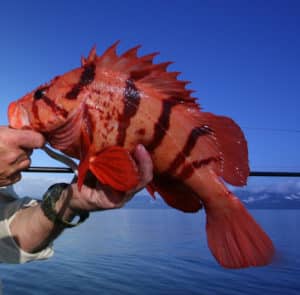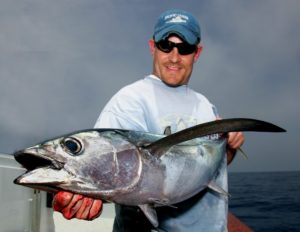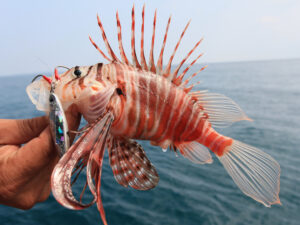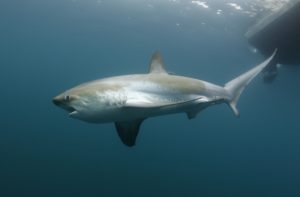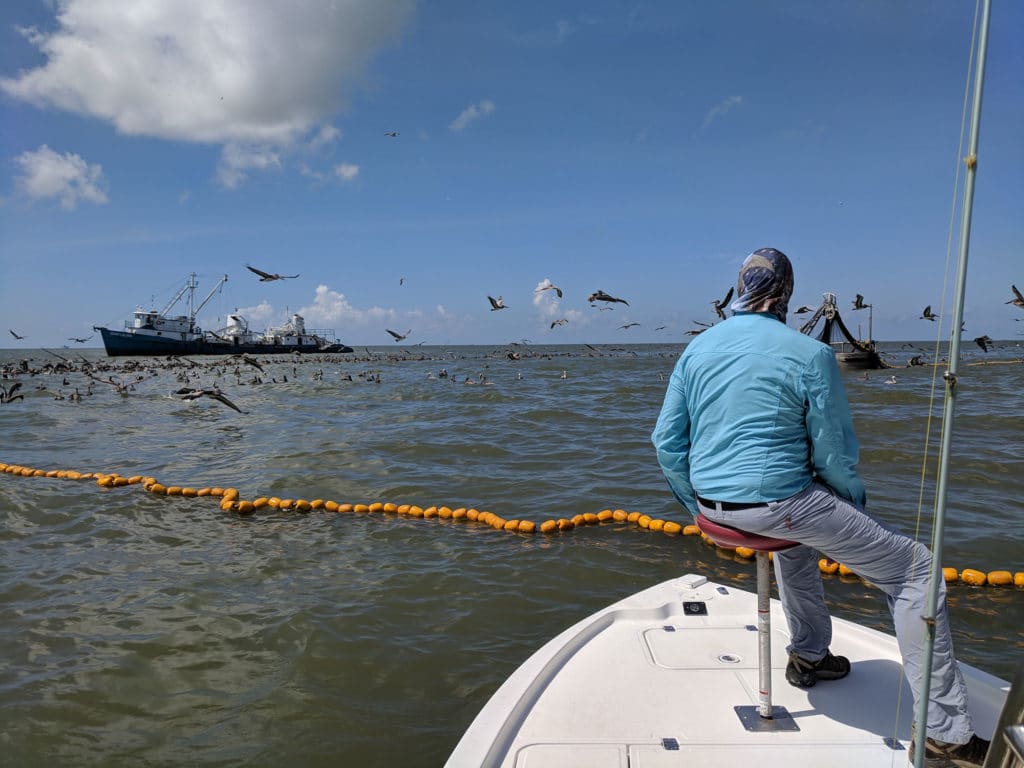
Disgusted, I watched the brief video on my monitor.
“This is the reality,” says the narrator, Capt. Eric Newman, a top guide out of Venice, Louisiana, with the outrage evident in his voice. “This is what happens when pogy boats come around.”
The camera zooms in to the white belly of a floating redfish.
“Bull red, dead. There’s another out there,” Newman says. The camera sweeps, zooms in. “Another one out there, dead.” The camera moves, zooms in. “Another one out there.” Again the camera zooms in.
“Dead redfish all around us.” The video zooms out to reveal bloated white bellies bobbing at the surface. This is just off a beach in the Mississippi River Delta. “That’s our brood stock,” Newman adds, shaking his head.
He makes clear that this is no isolated phenomenon, but rather a regular event. “It’s because of those guys, over there,” he adds as the camera pans to a big menhaden factory-reduction vessel pushing into the shallows, black smoke pouring from its stacks.
If you suspect any of this is hyperbolic, type “sportfishingmag.com Louisiana menhaden” into your search-engine bar and see for yourself.
How can this be? How can a commercial purse‑seine fishery be allowed to kill so many large red drum in pursuit of pogies?
As with so many aspects of fisheries management and all the politics that convolute the process, it’s complicated.
The first piece of the puzzle is jurisdiction. While there is some regional, inter-jurisdictional regulation, the harvest of Gulf menhaden—which occurs mostly within state waters—is not determined federally. Rather, Louisiana pogy management is up to Louisiana, where well-financed menhaden-reduction-industry lobbyists can heavily influence politicians. In recent years, only two menhaden-reduction firms have fished Louisiana waters: Omega Seafoods (recently declared out of compliance with federal law for overfishing Chesapeake Bay menhaden) and Daybrook Fisheries.
These two companies account for most of the state menhaden catch, and that means for most of the entire Gulf of Mexico catch because 90 percent of all Gulf menhaden swept up by seiners are taken off Louisiana.
That also means that the state is allowing two foreign-owned commercial-fishing firms to kill our redfish: Omega is a Canadian company and Daybrook is South African.
Beyond the dead bull reds that guides like Newman as well as private boaters find floating around menhaden operations, there’s the question of volume. What sort of numbers are we talking about?
Believe it or not, no one knows how many redfish are being killed by pogy boats in Louisiana waters. That’s surprising in a state where redfish are so iconic and as important as gamefish, and in a state that has in many respects done a good job of managing its fisheries.
The only reference to bycatch for this fishery I could find—stated in both federal and state documents—says: “In Louisiana waters, anyone legally taking menhaden shall not have in their possession more than 5 percent by weight, of any species of fish other than menhaden and herring-like species.”
Best-case scenario, that’s still a lot of dead reds and other species of fish, if one figures 5 percent—or even 2 or 3 percent—of three-quarters of a billion pounds, since that’s the volume of pogies that these two foreign operations remove from Louisiana waters each year.
But the actual scenario is much darker in that this “restriction” neither measures nor limits all fish (like those floating bull reds) not retained, but tossed back over, dead, as tons of fish are pumped into the steamer (carrier vessel). So Louisiana allows Omega and Daybrook boats to kill unlimited numbers of redfish, seatrout, croaker and everything else that gets trapped in their huge seine nets.
Perhaps that’s not surprising for a fishery that, unlike almost any other major commercial fishery, has no limits—period. That is, Omega and Daybrook operate here with no harvest quota (TAC, or total allowable catch) on menhaden. There are few fisheries in this country so unrestricted, where the sky’s the limit.
At the same time, there are few other major commercial firms that are also so unaccountable. Under the nation’s fishery law (Magnuson-Stevens Fishery Conservation and Management Act), any commercial fishery with three or fewer harvesters is not required to reveal its harvest data. So fishery managers simply take the word of Daybrook and Omega when it comes to harvest (let alone bycatch) data of menhaden, a forage species and filter feeder critical to the Gulf’s ecology.
Anglers have expressed other concerns as well, including the damage that these 200-foot floating fish factories might do environmentally when they churn up water just a few feet deep up against beaches, as well as the harm done to the state’s recreational fishery, not only from all the gamefish left behind in their wake, but also the wanton disregard for recreational boats already on the grounds, fishing, when these operations chase them away, as happens far too often. How is all this affecting recreational fishing in a state where that sport is worth an estimated $2 billion annually?
Except for Virginia, not a single Atlantic Coast state allows any reduction fishing for menhaden, having recognized it as an ecologically destructive industry. In the Gulf, ditto for Florida; Alabama, Mississippi and Texas have at least some restrictions on the books. But Louisiana imposes few limits on pogy boats.
Hopefully, sportsmen’s organizations will become increasingly engaged with this issue in coming years. It’s certainly on the radar of the Teddy Roosevelt Conservation Partnership and the Coastal Conservation Association. A very active group that has made a difference in the issue of menhaden-reduction fisheries in the Atlantic, Menhaden Defenders is, at press time, developing a campaign to deal with problems in Gulf reduction fisheries (menhaden-defenders.org/gulf).
It’s past time to limit foreign commercial netters in the Gulf from getting away with murder. As Newman says, in reference to the menhaden-reduction operations: “We have an amazing sport fishery here in Louisiana. But if this keeps happening, ‘Sportsman’s Paradise’ is gone.”

